What is ESP in email marketing: Everything You Need To Know
Lots of professionals associate the word “email service provider” (or ESP) with simple email services such as Gmail or Yahoo. However, as a marketer, you’ve also found that these email service providers lack the resources and functionality you need to efficiently reach your target audience with relevant content.
You’ve got lovely emails from businesses you admire. You can also send beautiful emails if you use the right email service provider. So, what exactly is an ESP and what role does it play in marketing? Furthermore, what can it do for your business or organization? Let’s take a closer look.
What’s an ESP and how does it work?
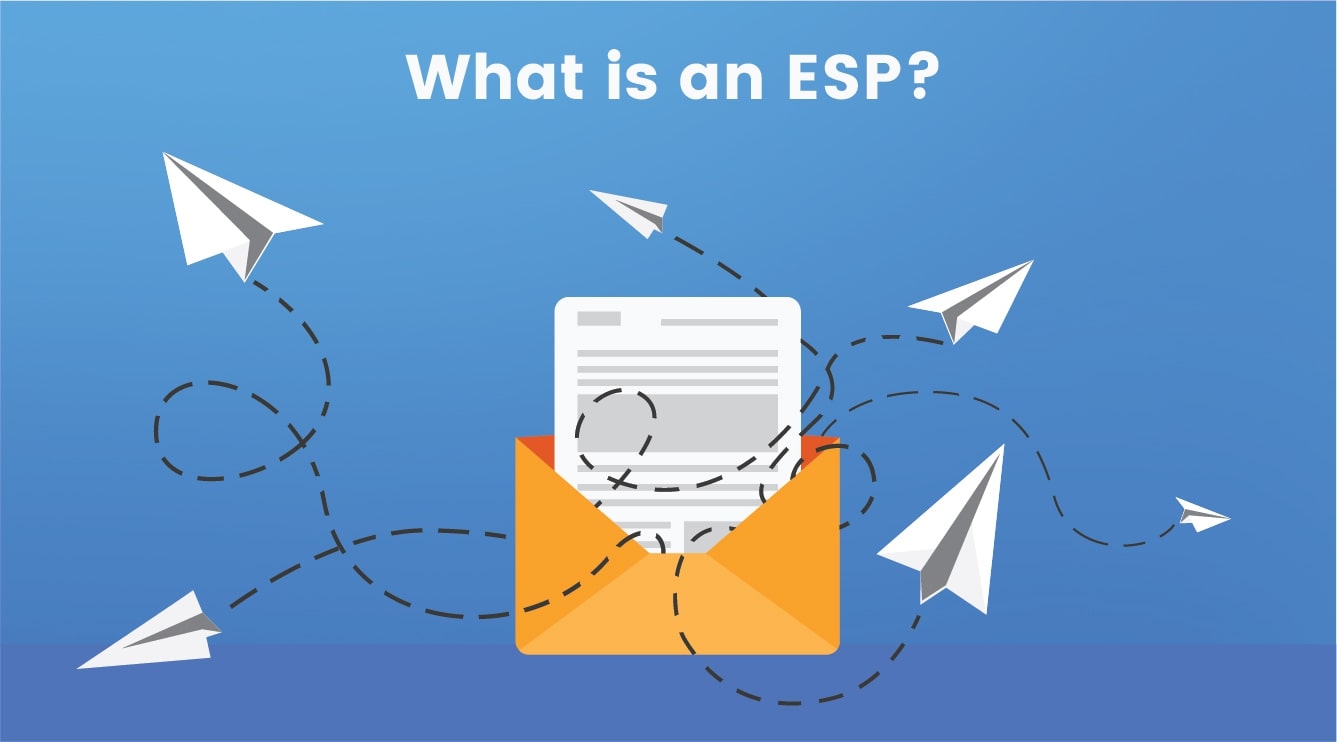
An Email Service Provider (ESP) is the infrastructure that a company uses to manage and send their email marketing communications. These solutions are typically hosted on servers and include the hardware and/or software required to send bulk emails.
An Email Service Provider’s functionality is very wide and varies based on the provider, but at a minimum, they provide the maintenance and management of email lists for opt-in users, as well as the sending of emails to those lists. An ESP also often has the ability to segment email contact lists, create email templates, create automated email workflows, and evaluate and monitor email campaign results.
An Email Service Provider (ESP) is required for any company that wants to effectively execute a comprehensive email marketing campaign, but there are also additional resources and technologies that can be used in combination with an ESP to improve email marketing efforts. These tools allow you to use interactive content to communicate with your customers, send personalized content and product suggestions, obtain more advanced data and analytics, and more.
4 Types of email service providers
Email service providers can differ not only in their service, but also in the features used and the measures for spam control. Here are the most common types of email service providers to give you a head start:
1. SMTP relay provider

SMTP Relays are used if an email is sent outside of your own address range. SMTP relays are third-party providers that, in the case of bulk emails or mass mailings, may exclude spam by authentication, licensing, and their own network. This means that email servers do not consider emails sent from such a server to be spam. SMTP relays are often used in conjunction with an API that automatically reads customer data and generates reports.
2. Web-based services/cloud email marketing
Cloud platforms in the field of email marketing provide web-based tools for sending bulk emails. Typically, an app is included that can be used by all company employees. Cloud email service customers frequently use it as software as a service in the business and pay monthly fees. This means that using cloud email services requires very little effort and a high degree of preparation.
3. Integrated marketing platform
Some marketing applications and tools provide integrated solutions for bulk email marketing, site review, and other functions. Such solutions are often intended for use in large corporations. Since the functionality is partially very high, the prices are correspondingly higher. The portfolio can include data-driven marketing, cross-channel marketing, and IoT applications.
4. Dedicated email service provider
Dedicated email service providers, including dedicated servers, are configured to use their own infrastructure. The servers are only used for sending emails. Because of their closed networks, dedicated systems may have a strong reputation and be successful in the battle against spam.
Dedicated systems also provide extra features such as record management and email delivery to a number of server systems such as PHP, ASP.NET, or Java. Bulk emails can be automated using an API. In this situation, the technological tools used are on the provider’s side.
For most businesses and marketers, the abbreviation ESP mainly refers to the fourth type; the dedicated email service provider. This is also the main subject that we’re going to discuss in the following sections.
Criteria for Choosing a Dedicated Email Service Provider

Mobile-friendly design
Email messages should be optimized for and computer by the email service provider. This ensures that your email will be optimized for mobile devices and can be seen on even the smallest screens. Since only half of emails are opened and read on smartphones, this feature is extremely necessary.
Ready-made templates.
For your email campaign, you will need a sufficient number of ready-made templates on various themes. It can also include assistance from the designer in cases where you need to build a specific email template without your own efforts.
Sending automated emails
This feature is extremely useful for email marketers because it guarantees that your emails are sent when a new subscriber joins your email list or when a subscriber clicks on a link in the email. You can create automated email marketing campaigns based on user activity using an automated sequence of emails.
6 Best Email Service Providers
1. AVADA Email Marketing Automation
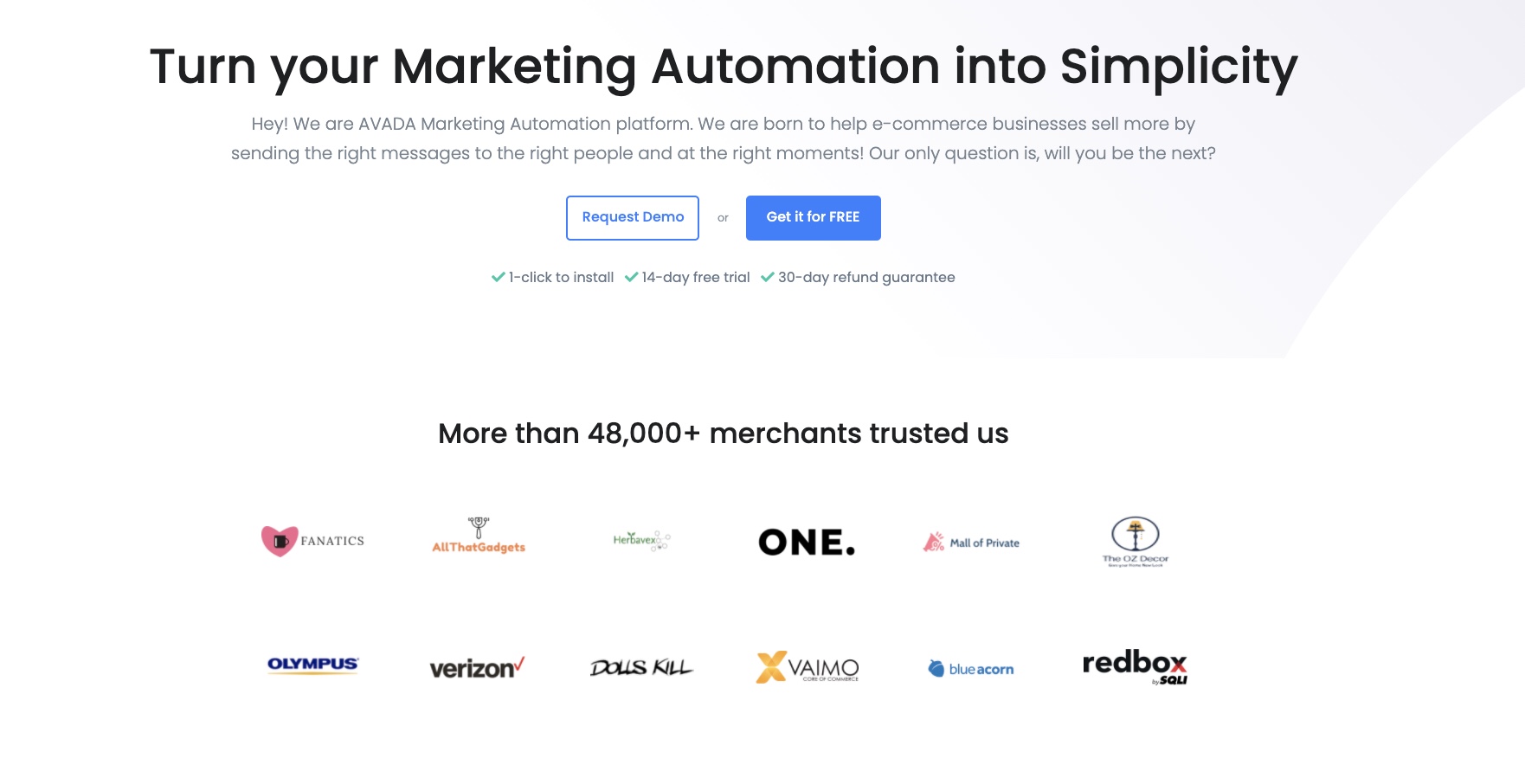
AVADA Email Marketing Automation is one of the most popular email marketing services on the market. Its Forever Free plan, with which you can send 15,000 emails a month to 1,000 subscribers for free, is very popular with small businesses.
This is where AVADA Email Marketing Automation outperforms the other ESPs on this list. The Forever Free plan does not require you to enter your credit card information, and as the name implies, it is free indefinitely. There is no catch!
The only downside of using the Forever Free plan is that you would not be able to use any of the app’s premium features such as sending automated emails and advanced segmentation.
Main feature includes:
- Lead capture
- List segmentation
- Abandoned cart saver
- Drag-and-drop email builder
- Email Automated workflows
- Advanced data tracking.
AVADA Email Marketing Automation’s Pricing Plans
AVADA Email Marketing Automation offers 3 main plans – 1 free plan and 2 paid plans. The paid plans are list-based (monthly), which means you pay for the number of contacts you have on your list. The lowest paid plan started at $9/month for 1,000 contacts, full features and unlimited emails.

Pros and Cons
Pros:
- The Forever Free plan is a great plan for email marketing beginners
- Very fast setup and friendly interface
- Beautiful pre-designed email templates
- Powerful segmentation and automated emails
- Ability to manage several channels in a single system: Email, Web Push, and SMS.
- Easy to use
Cons:
- No landing page and A/B test features.
2. SendinBlue
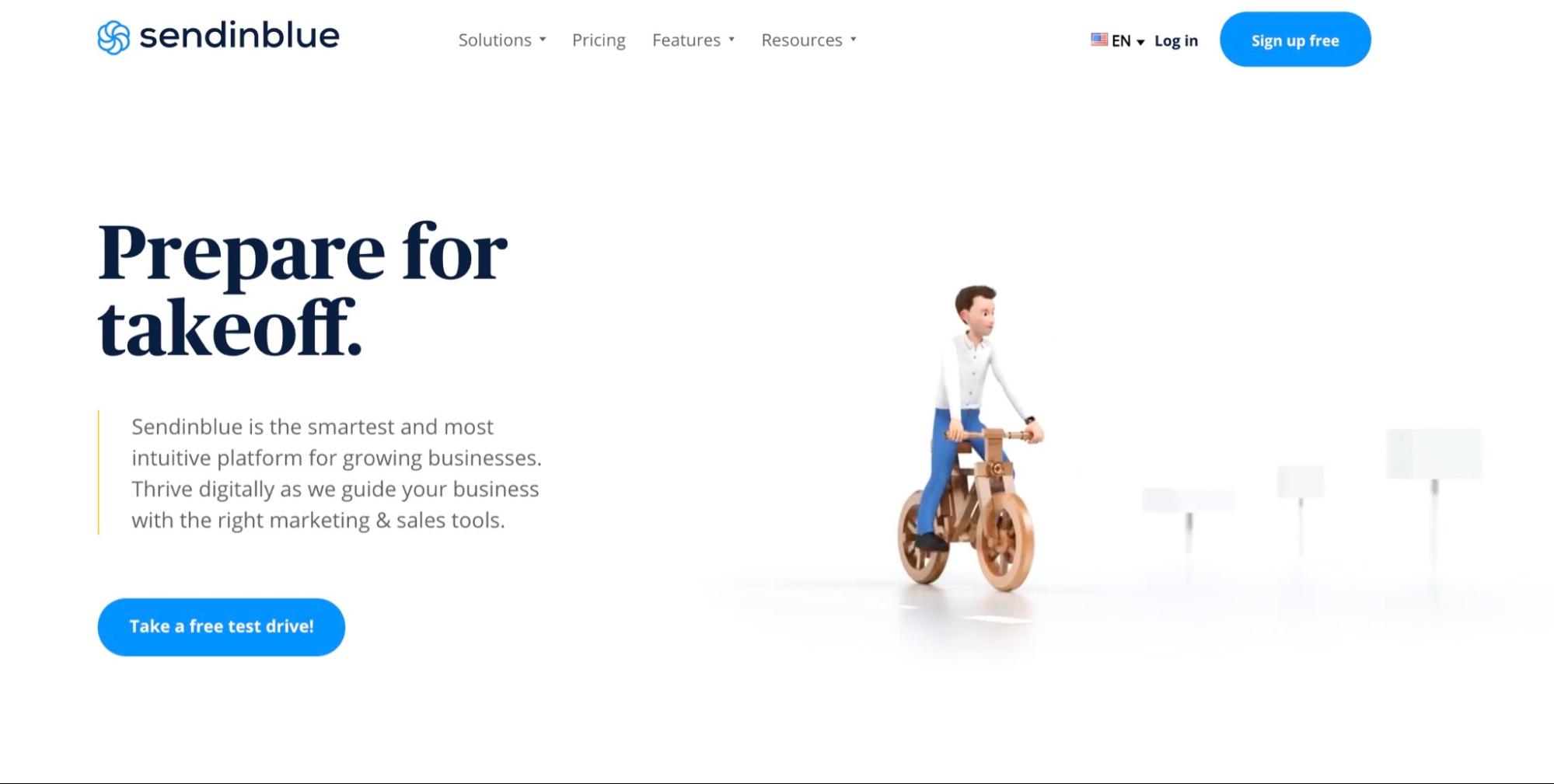
In 2012, SendinBlue, which began as a digital agency, grew into an email marketing network aimed primarily at small businesses. All, from pricing to functionality, is created with small and growing businesses in mind. The SendinBlue free plan provides email automation functionality as well as the ability to send 300 emails a day. As you’ll see below, it’s also one of the most accessible ESPs on the market.
SendinBlue’s Pricing Plans
SendinBlue, unlike a majority of ESPs, doesn’t provide list-based pricing. Instead, the prices are determined based on the number of emails you send per month.
- Free – $0 per mo. (300 emails a day)
- Lite – $25 per mo. (40,000 emails a month.)
- Essential – $39 per mo. (60,000 emails a month.)
- Premium – $66 per mo. (120,000 emails a month.)
- Enterprise – Custom
SendinBlue’s Pros and Cons
Pros:
- Neatly designed user interface
- One of the most affordable ESPs on the market
- SendinBlue’s automation functions are included in the free plan
- Beginner-friendly software
Cons:
- You can only send 300 emails per day with the free plan
- No landing page builder
3. eSputnik
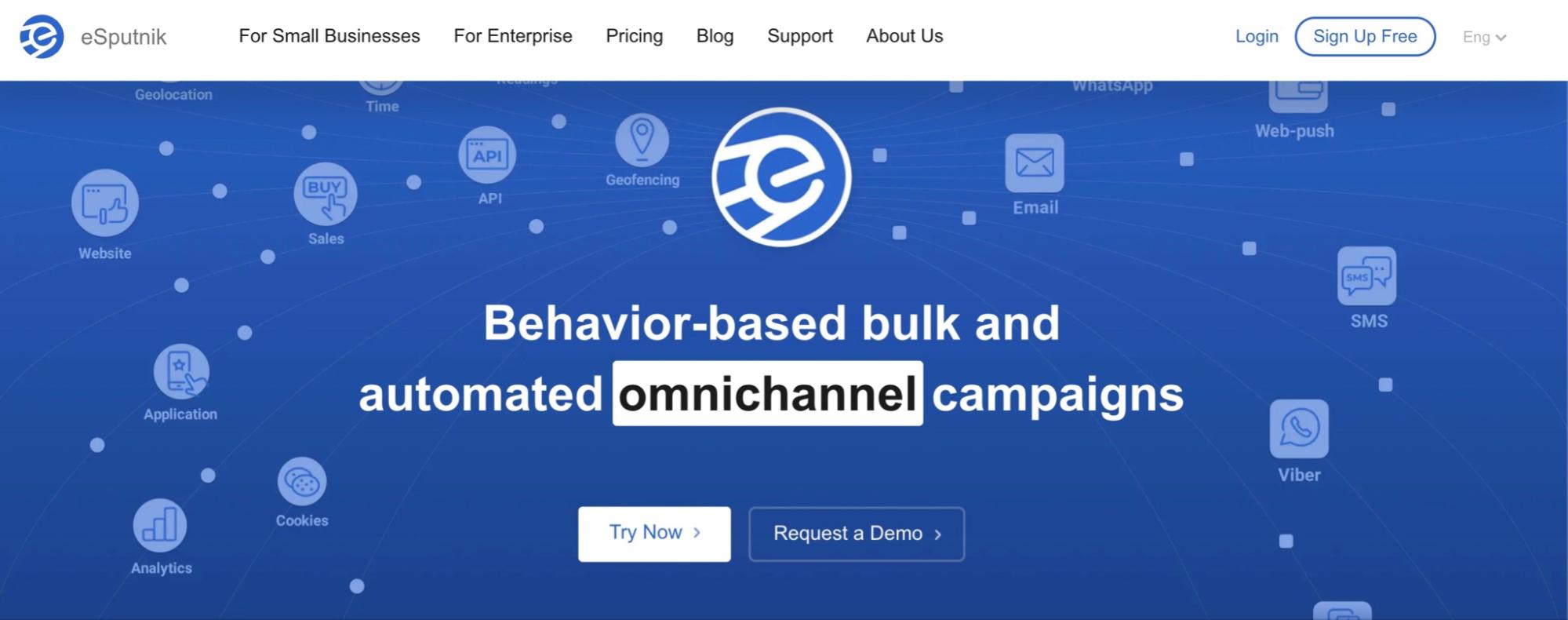
eSputnik is a marketing automation company headquartered in Ukraine with years of experience working as IT consultants for top companies using email and SMS marketing. The business wanted to combine its software development background and e-marketing experience to create a user-friendly email marketing tool with a customer-focused approach.
eSputnik makes it simple and easy to set up multichannel campaigns via email, text messaging, web push notification, and messengers. You may use the email editor to create scenarios for sending pre-written messages – when, to whom, where, and under what conditions. Another nice feature of eSputnik is that it does not divide its users into basic and pro users, as most ESPs do. The business stays true to its mission of making professional marketing simple and affordable.
eSputnik is also one of the most accessible email marketing services on the market, with a feature-rich free plan. This makes it a perfect ESP for small businesses looking for the biggest bang for their buck.
eSputnik’s Pricing Plans
Email:
- Freedom – $1.99 for 1,000 messages
- Optimal – $15/month
- Email Marketing Agency – $599/month
For more information about pricing on SMS, Web Push, and Viber services, click here.
eSputnik’s Pros and Cons
Pros:
- The free plan provide features for beginners and advanced users alike
- Advanced segmentation features
- Ability to manage several channels in a single system: Email, Web Push, SMS, and Viber.
Cons:
- Fewer integrations than other ESPs on this list.
4. ConvertKit
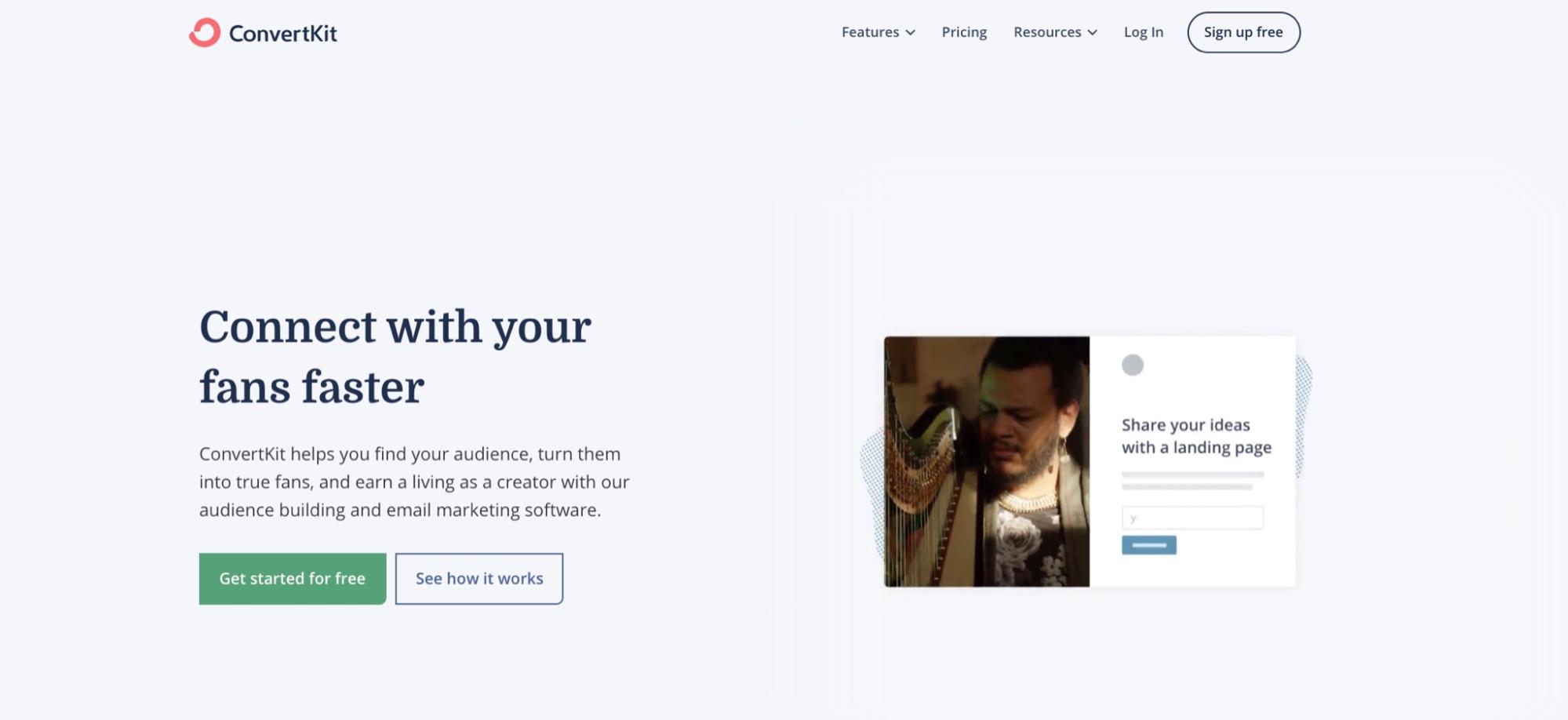
ConvertKit is the email marketing service of choice for many professional bloggers, such as Pat Flynn of Smart Passive Income. On top of that, ConvertKit provides the same features and ease of use as the other ESPs on this list, with one major exception: it is geared more toward bloggers. However, this does not preclude it from being appropriate for small businesses. The automation rules that ConvertKit allows you to set up are simply incredible. It is built on a basic “if this/then that” sequence and will genuinely assist you in capturing more business leads.
ConvertKit’s Pricing Plans
ConvertKit’s pricing is dependent on a list of subscribers. The greatest disadvantage is that there is no free trial. However, when you sign up, you have the option of receiving the first month free. The entry-level email plan with 1000 subscribers costs $29 a month.
- 0 – 1,000 subscribers: $29/month
- 1,000 – 3,000 subscribers: $49/month
- 3,000 – 5,000 subscribers: $79/month
- For up to 8,000 subscribers: $99/month
If you have more subscribers than 8,000, you can calculate the price here.
ConvertKit’s Pros and Cons
Pros
- The email automation features are both powerful and easy to use
- Excellent sign-up forms and email editor
Cons
- No free trial
- Limited reporting features
5. AWeber

AWeber, founded in 1998, is the favorite ESP for over 120,000+ small businesses, bloggers, and entrepreneurs worldwide. AWeber is easy to use, has a user-friendly interface, is jam-packed with features, and has the best customer support team of any email marketing service.
AWeber’s Pricing Plans
AWeber’s pricing, plans are list-based. It provides a free 30-day trial for lists of up to 500 subscribers. After the trial is over, you can choose any of the following list-based pricing tiers:
- Up to 500 subscribers – $19 per month
- Up to 2,500 subscribers – $29 per month
- Up to 5,000 subscribers – $49 per month
- Up to 10,000 subscribers – $69 per month
- Up to 25,000 subscribers – $149 per month
- Over 25,000 subscribers – Custom
If you go above your plan’s monthly limit, you’ll be billed for the next plan up.
AWeber’s Pros and Cons
Pros
- User-friendly interface
- Autoresponders are easier to set up
- Excellent customer support
- Wide variety of email templates
- AWeber’s image library has 6000+ free stock images
Cons
Poorly designed email templates. AWeber provides more templates than other ESPs, yet quality-wise, their email templates are somewhat poorly designed.
6. SendPulse

SendPulse is a relatively new service that appears to have taken the email marketing industry by storm by offering some truly revolutionary features at very reasonable prices. It aims to bring unique features and a simple learning curve to the ESP market, making it an excellent choice for both beginners and professionals.
SendPulse is an automated solution that allows you to combine bulk email, bulk SMS messages, and web push alerts in your contact campaign. This is something that no other ESPs on this list do. You also get access to main features like autoresponders, subscription forms, A/B checking, and data analytics. SendPulse also provides a free plan that allows you to send up to 15,000 emails per month to up to 2,500 subscribers while also getting access to premium features like web push and autoresponders.
SendPulse Pricing Plans
SendPulse provides both list-based and pay-as-you-go plans.
List-Based Plans
- Up to 2,500 subscribers – Free (Limit – 15.000 emails/month)
- 2,500 subscribers – $9.85 a month
- 3,000 subscribers – $29 a month
- 4,000 subscribers – $32 a month
- 5,000 subscribers – $35 a month
- 10,000 subscribers – $53 a month
- 25,000 subscribers – $108 a month
Pay-as-you-go Plans
If you don’t need to send too many emails, SendPulse’s prepaid email packages provide you with the option to pay only for the number of nu emails you need.
- 10,000 emails – $32
- 25,000 emails – $70
- 50,000 emails– $125
- 10,0000 emails– $212
- 250,000 emails – $440
- 500,000 emails– $812
Apart from these plans, there’s also a VIP plan if you have a list of more than 1 million subscribers. You’ll need to reach out to the sales team in order to sign up for this plan.
SendPulse’s Pros and Cons
Pros
- The free plan is great, full of features and options that you wouldn’t often get with a free plan
- Access to premium features like web push and bulk SMS messages
- Fast setup, and user-friendly interface
- Great customer support
Cons
- Fewer integrations than other ESPs on this list
- A new player in the market, it lacks the experience that other ESPs on this list have.
Final words
That’s it! I hope this article has provided you with valuable information about ESP email marketing. Please feel free to leave comments below for further discussion on this topic!
New Posts







